Writing a concise and engaging project proposal
Don’t get put off if you don’t have all the information all at once.
Do what you can and remember, when you have more data or information, to fill in the gaps.
Each paragraph you write about your project answers questions or concerns that strategic partners, sponsors, and funders might have.
It’s a useful exercise in any event, so you will see how worthwhile your project is
This is a good place to detail Strategic Relevance
This is a good place to evidence Strategic Relevance
